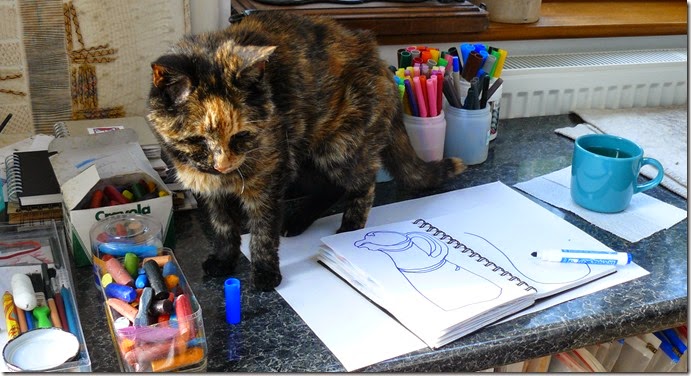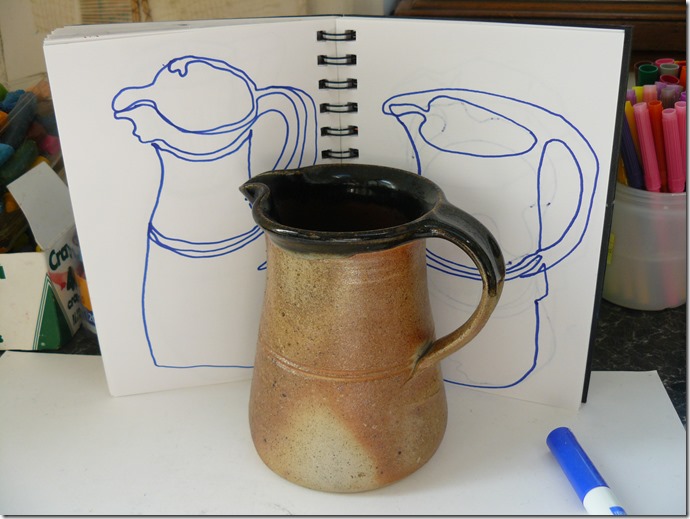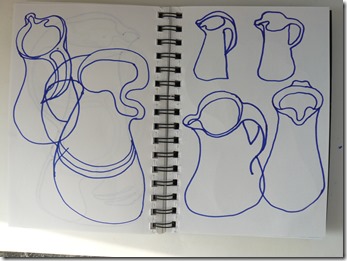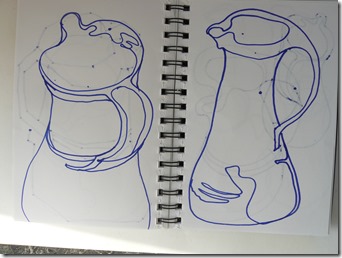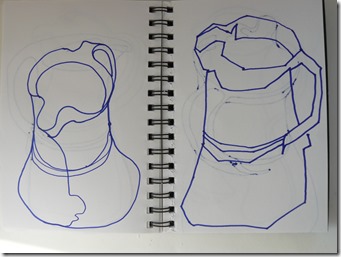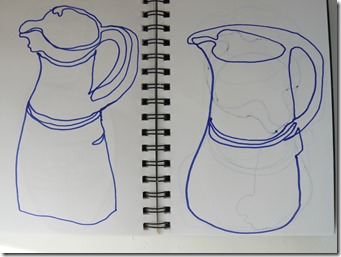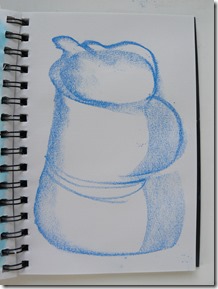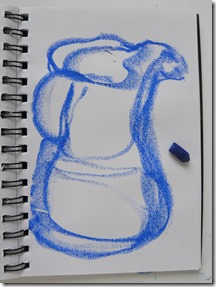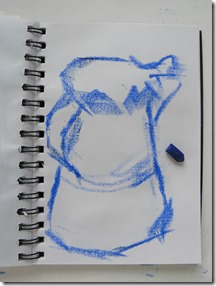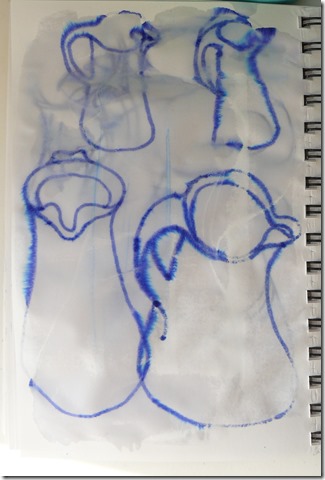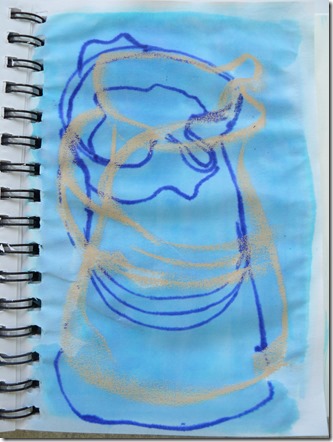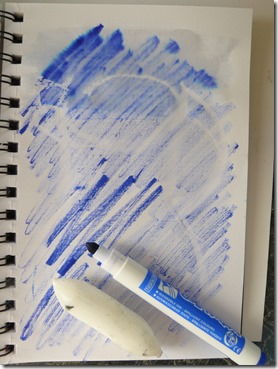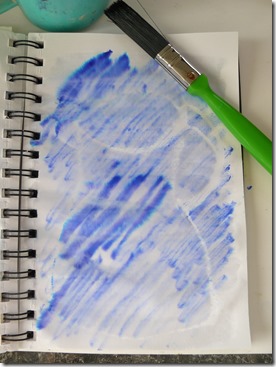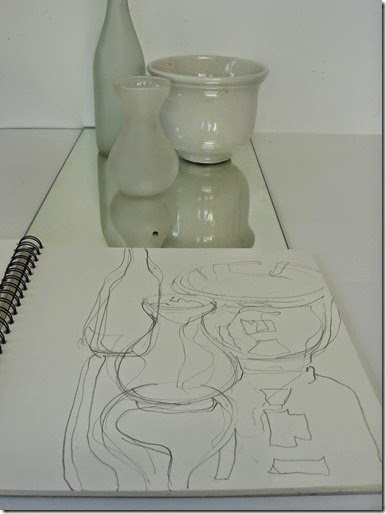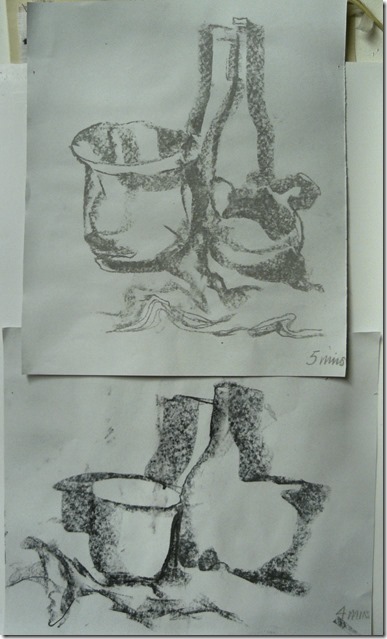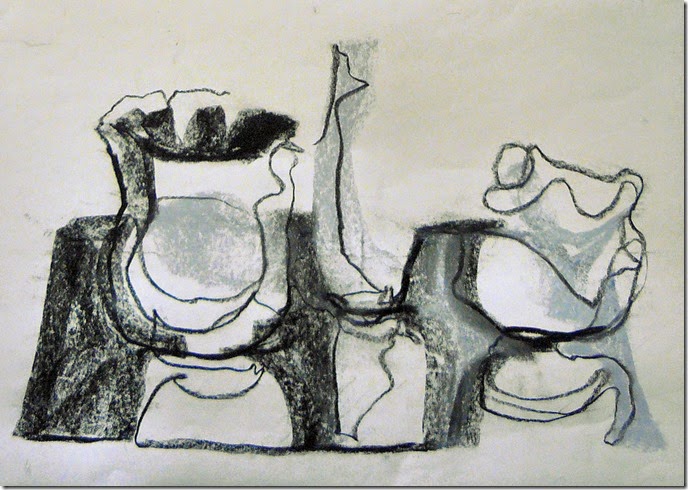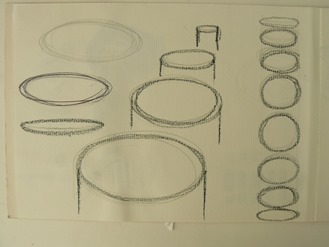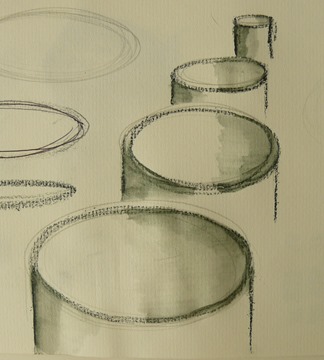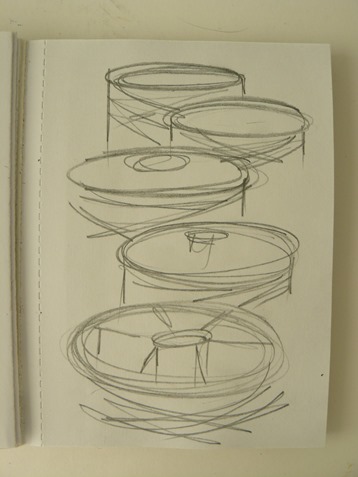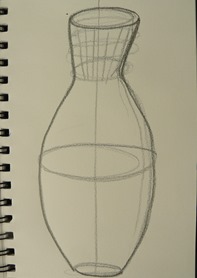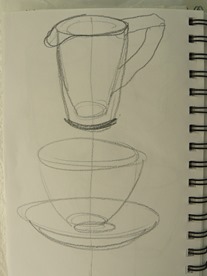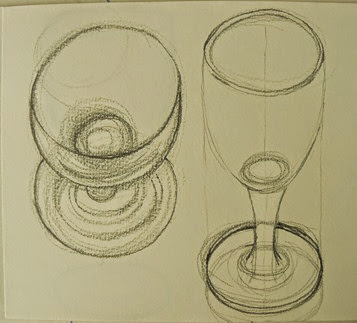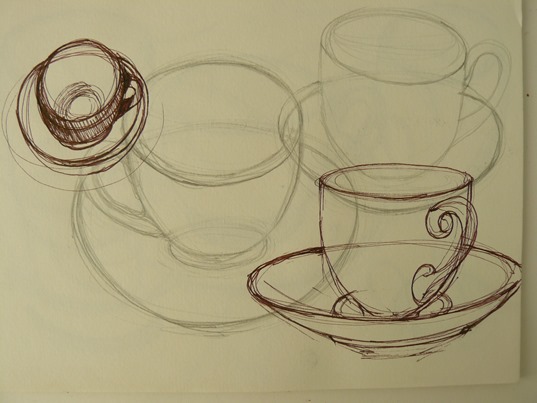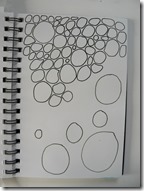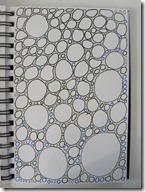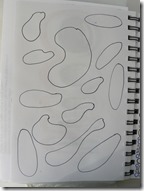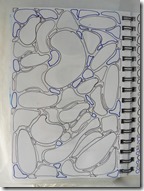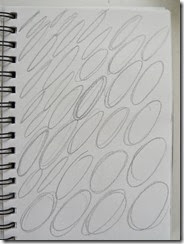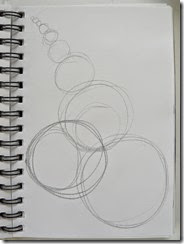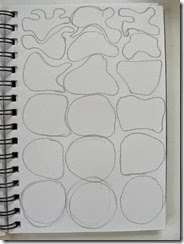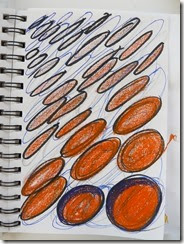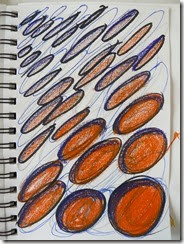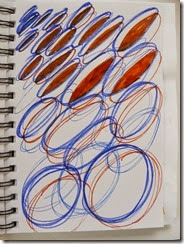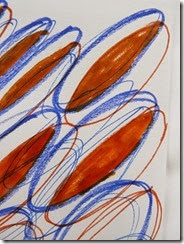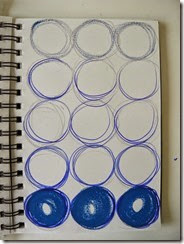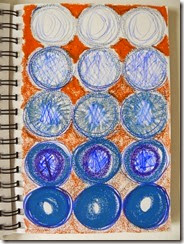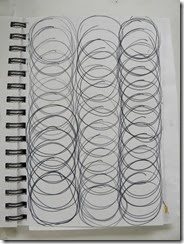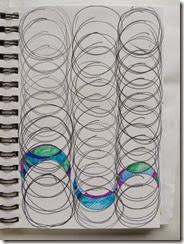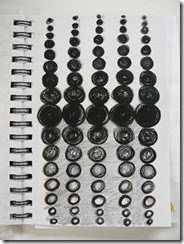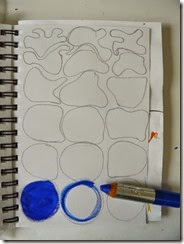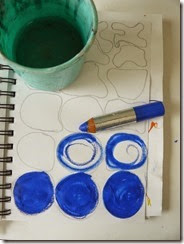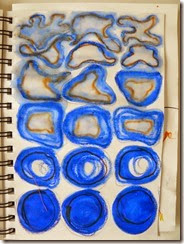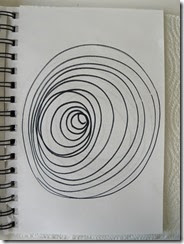Welcome to the ‘wobbly blue jug’ drawing session! Last week you explored the ‘correct’ way of drawing a cylindrical shape; now you will progress onto ways of drawing an item such as a jug in a more ‘characterful’ way. You will of course, benefit from your knowledge of what is ‘correct’ in this more subjective, fun style of drawing. Ashy, my aged studio assistant, decides that I should really be drawing her instead, by standing in front of my jug.
Choose an object such as a jug. It might be any colour and might even have an interesting design on it. A jug has great character (hence the Toby Jug) so enjoy drawing your own jug to show its character in your own style.
However, there are rules:-
- It is important to work quickly, to stop yourself thinking too much about ‘how it should look’. Just let your eyes follow any lines they can see. Make quick drawings of just around 30 seconds. Use a timer or perhaps as long as you can hold your breath? Make lots of drawings from different angles to help you get to know your jug. You might draw just one jug per page or more than one. Just like last week, you can overlap different drawings on the same page.
- Move that pen or pencil across the page while looking at your jug and not looking too much at your page. Are you able to make yourself do this I wonder?
- Where possible, keep your marker on the page and make a continuous line.
No matter how many times you draw something, it always look different. Try looking at your jug at different angles. Will you include lines around shiny areas? Will you include lines around decorative features. The drawings below were all done with a felt tip marker which seeped through my thin sketchbook pages, suggesting other faded jug shapes from the reverse side of the pages. Remember to try drawing with a continuous line. Try curved lines, try angular lines
Next, chose a crayon that you can use on its side and do more drawings. Vary the pressure on the crayon; vary the type of line – smooth, flowing lines or maybe short, jagged sort of rhythms. I used a broken crayon as this length seemed about right for the A5 size of my sketchbook pages.
Next use a drawing method that will really force you to not look at what you are drawing. This is the equivalent to drawing wearing a blind-fold. I can’t show you an example as it’s invisible! I used a plain candle and a white oil pastel, but I can show you the result after I’ve painted a colour wash over the page! The watery colour wash has resisted the marks of the oil pastel. This is called a ‘resist’ method of drawing. You can do this with any marker such as an oil, wax crayon or a plain candle that will resist a water based paint/ink. The colour wash can be paint or ink, although the paint should be a water-based paint and not acrylic.
Beware - note what is on the reverse of your page. The colour wash from the page above seeped through to the reverse page – below - and effected the felt marker drawings which were water-soluble! I didn’t mind this although it might not always look good when this happens – a bit of serendipity!
Try this intentionally and make a drawing with a ‘resist’ marker on top of one that isn’t. The drawing below was made with a light grey oil pastel (non-soluble) and a felt marker (soluble). Add the colour wash to the drawing and see what happens. It’s an idea to put a layer of paper underneath if you wish to stop the wet going through several pages.
A variation on the resist idea is to draw your jug with a water resist marker, scribble over it with a water-soluble one – image below drawn using a plain wax candle and scribbled over with a felt marker. Then painted over with plain water.
Extra challenges – place a small group of objects together and draw them as a ‘still-life’ group. If you wish an extra challenge, place these objects on a mirror. Draw this still life with a fast, continuous line, looking mainly at the objects and not your sketchbook page. Don’t worry about ‘wrong’ lines – there’s no such thing. Just keep going and remember to work quickly.
The drawings below were drawn with the side of a crayon and limited to just a few minutes each to force a speedy drawing.
Make a fast, timed drawing with your non-drawing hand - left hand in my case!
Keep going – your drawings will get better and better. Believe me.
Next weeks lesson will be posted on Monday 7th July from Farncombe, as I and many Distant Stitch students will be enjoying the fun of our annual Summer School. Get your scissors ready!
